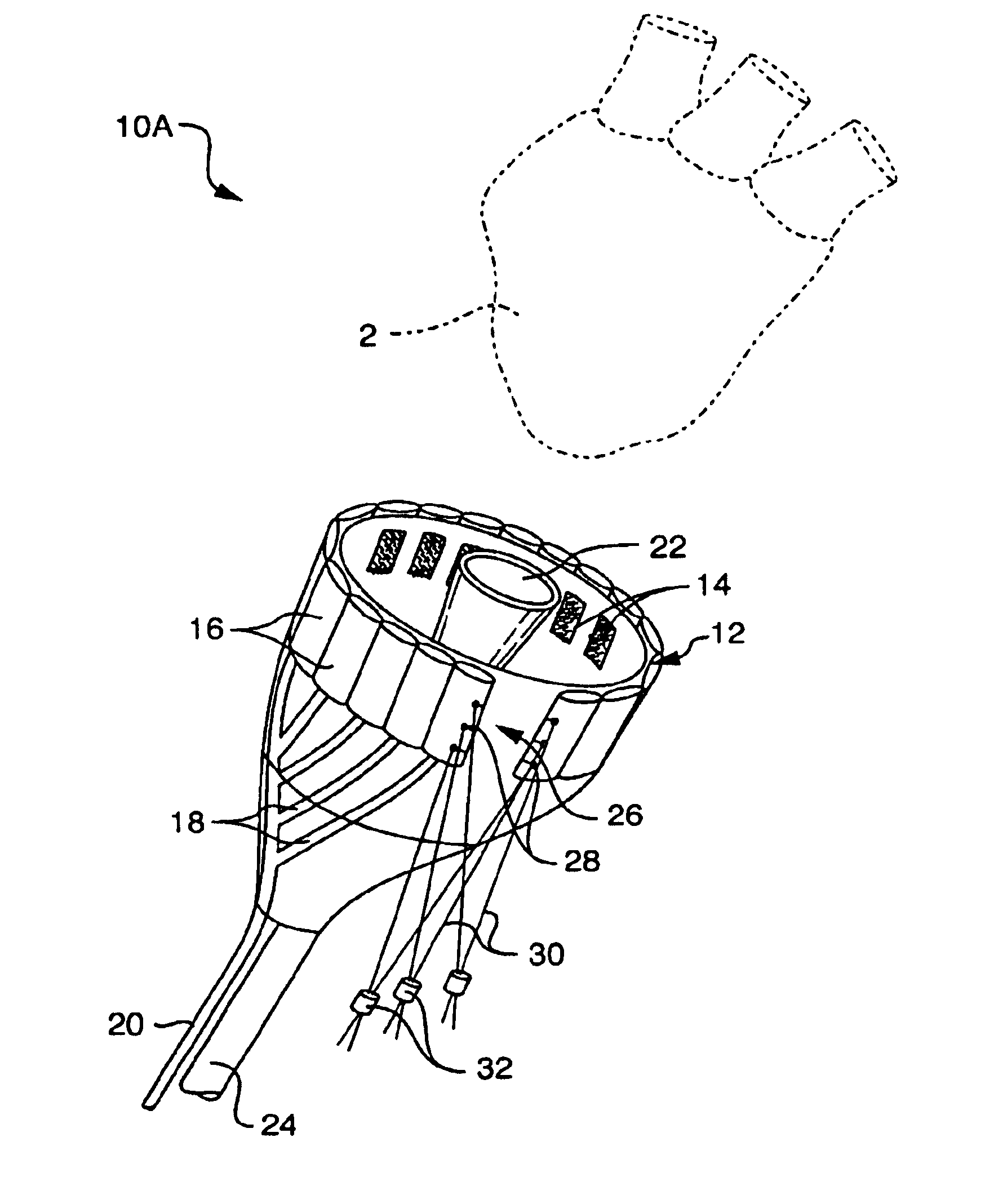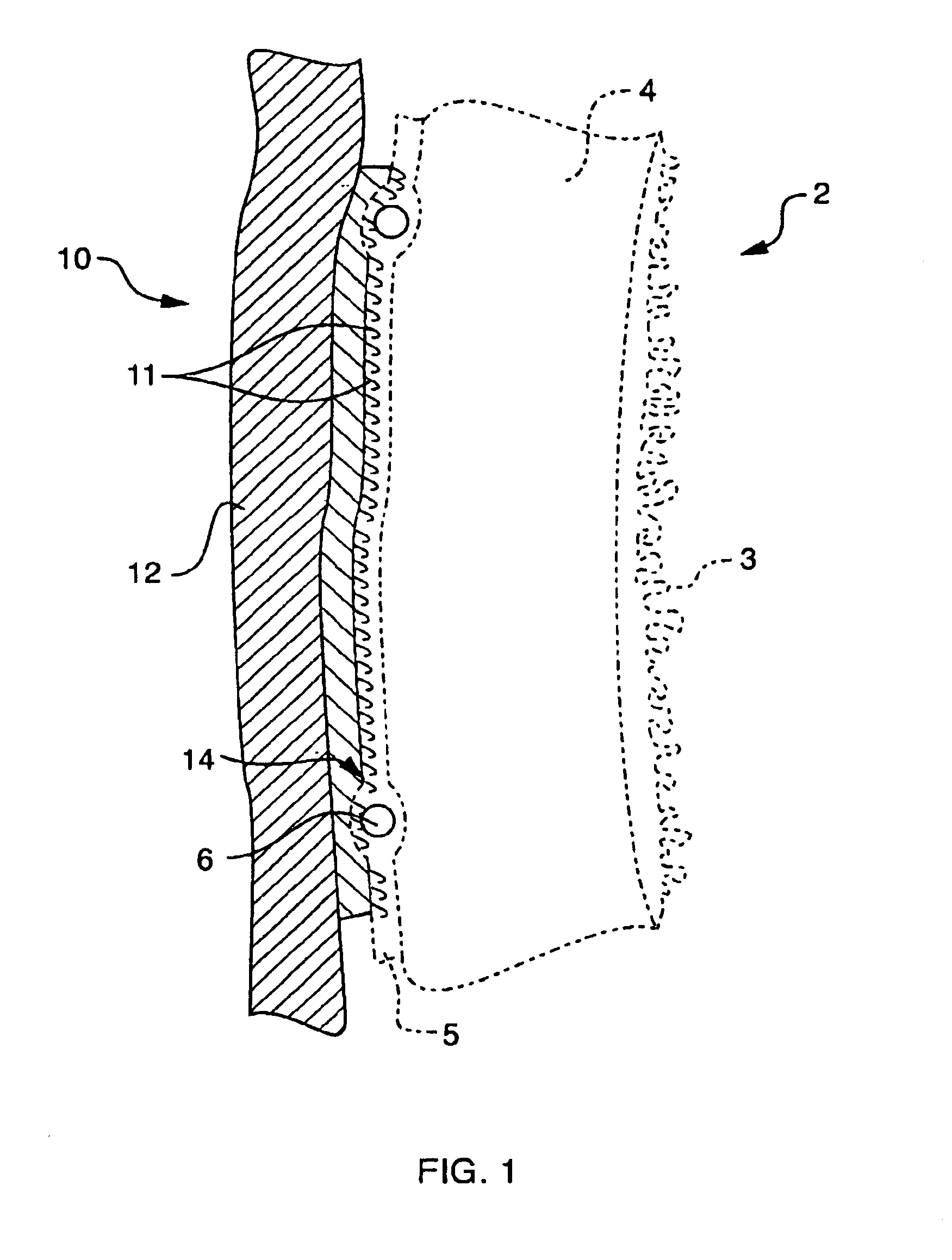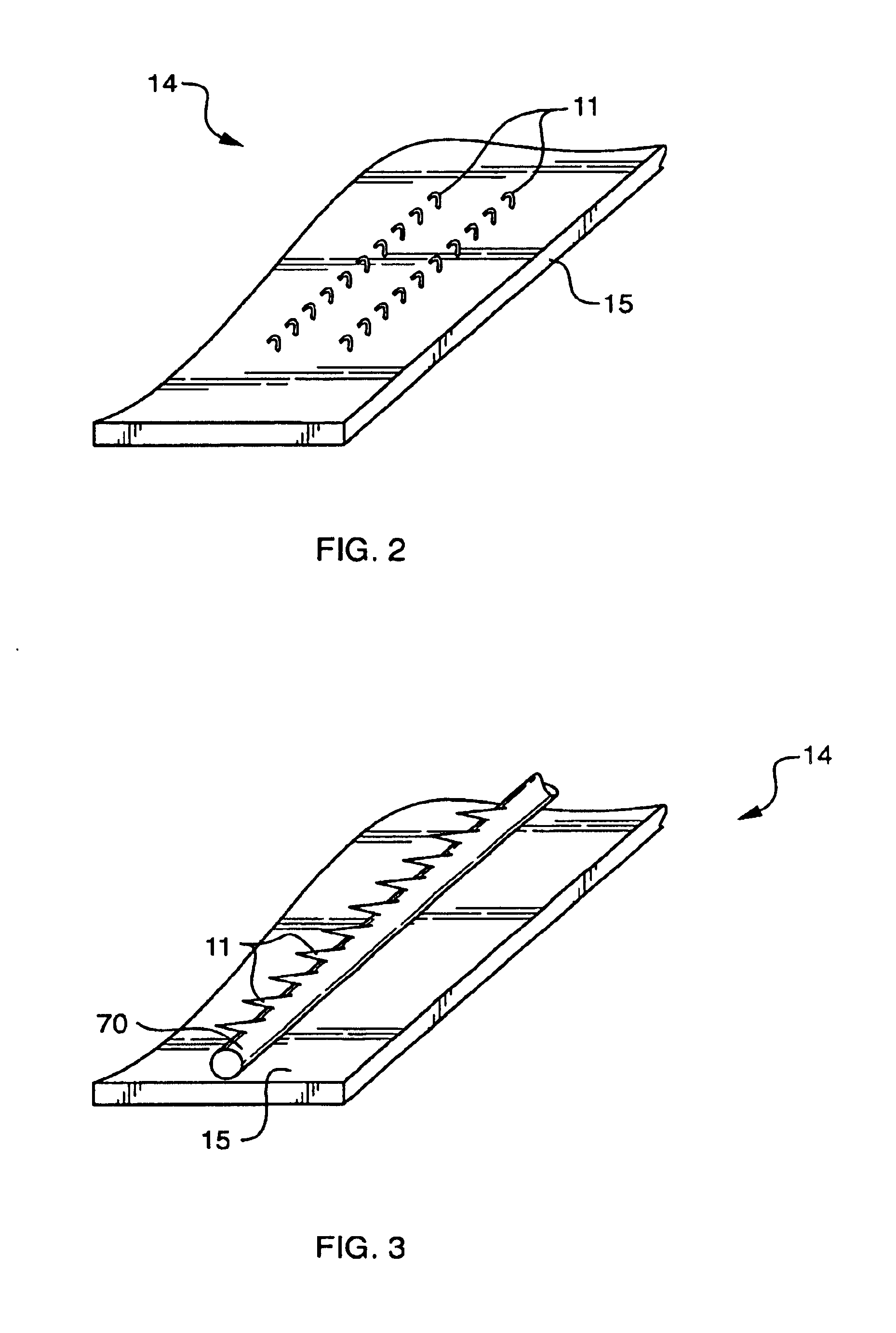Apparatus and method for detachably securing a device to a natural heart
- Summary
- Abstract
- Description
- Claims
- Application Information
AI Technical Summary
Benefits of technology
Problems solved by technology
Method used
Image
Examples
Embodiment Construction
FIG. 1 provides a schematic illustration of the function of the gripping elements 11 according to the invention. As shown, an array 14 of gripping elements 11 is attached to the surface 12 of a cardiac device 10 and engaged in contact with the surface of the heart muscle 2. In this simplified cross-sectional view of the heart, only the endocardium 3, myocardium 4 and epicardium 5 are shown. The gripping elements are preferably designed to lodge themselves within the epicardium 5 and secure the heart to the inner surface of the cardiac device 10. Thus, the gripping elements preferably have limited depth penetration, e.g., penetrating only the serous pericardium—the visceral layers of the epicardium. As further shown in FIG. 1, the outer surface of the heart muscle 2 also includes blood vessels 6. Preferably, the gripping elements 11 are designed to avoid puncturing such blood vessels.
The term “gripping element” as used herein is intended to encompass any object capable of penetrating...
PUM
 Login to View More
Login to View More Abstract
Description
Claims
Application Information
 Login to View More
Login to View More - R&D
- Intellectual Property
- Life Sciences
- Materials
- Tech Scout
- Unparalleled Data Quality
- Higher Quality Content
- 60% Fewer Hallucinations
Browse by: Latest US Patents, China's latest patents, Technical Efficacy Thesaurus, Application Domain, Technology Topic, Popular Technical Reports.
© 2025 PatSnap. All rights reserved.Legal|Privacy policy|Modern Slavery Act Transparency Statement|Sitemap|About US| Contact US: help@patsnap.com



